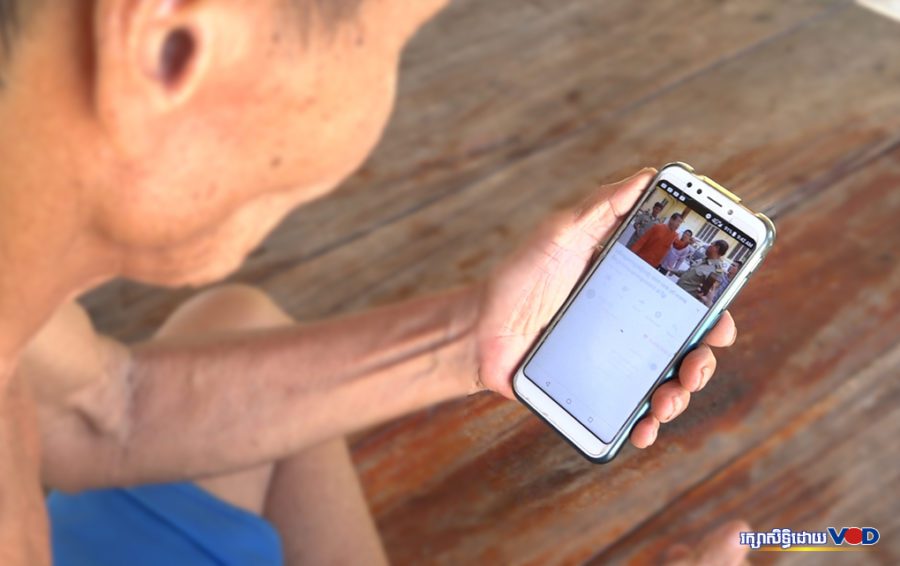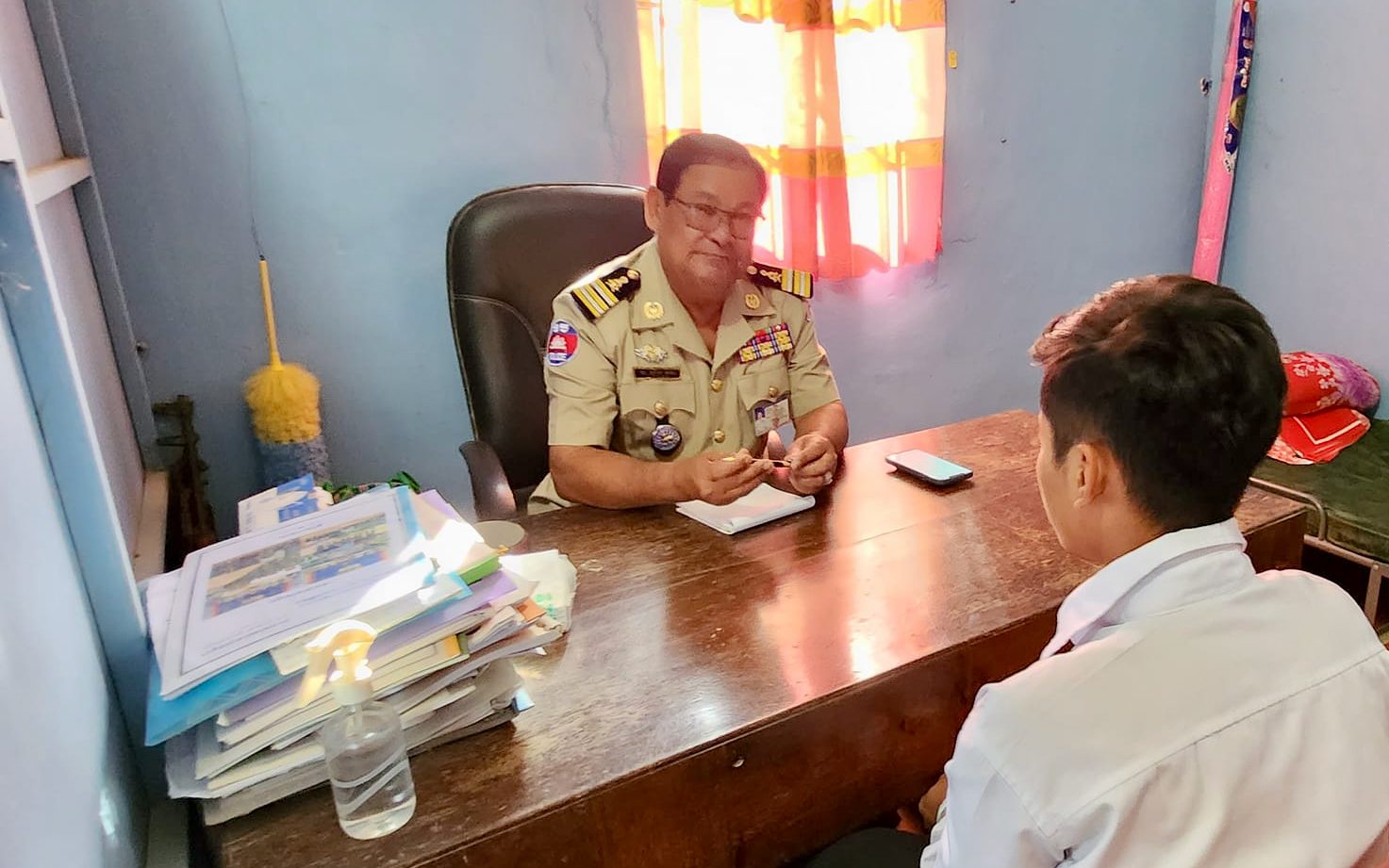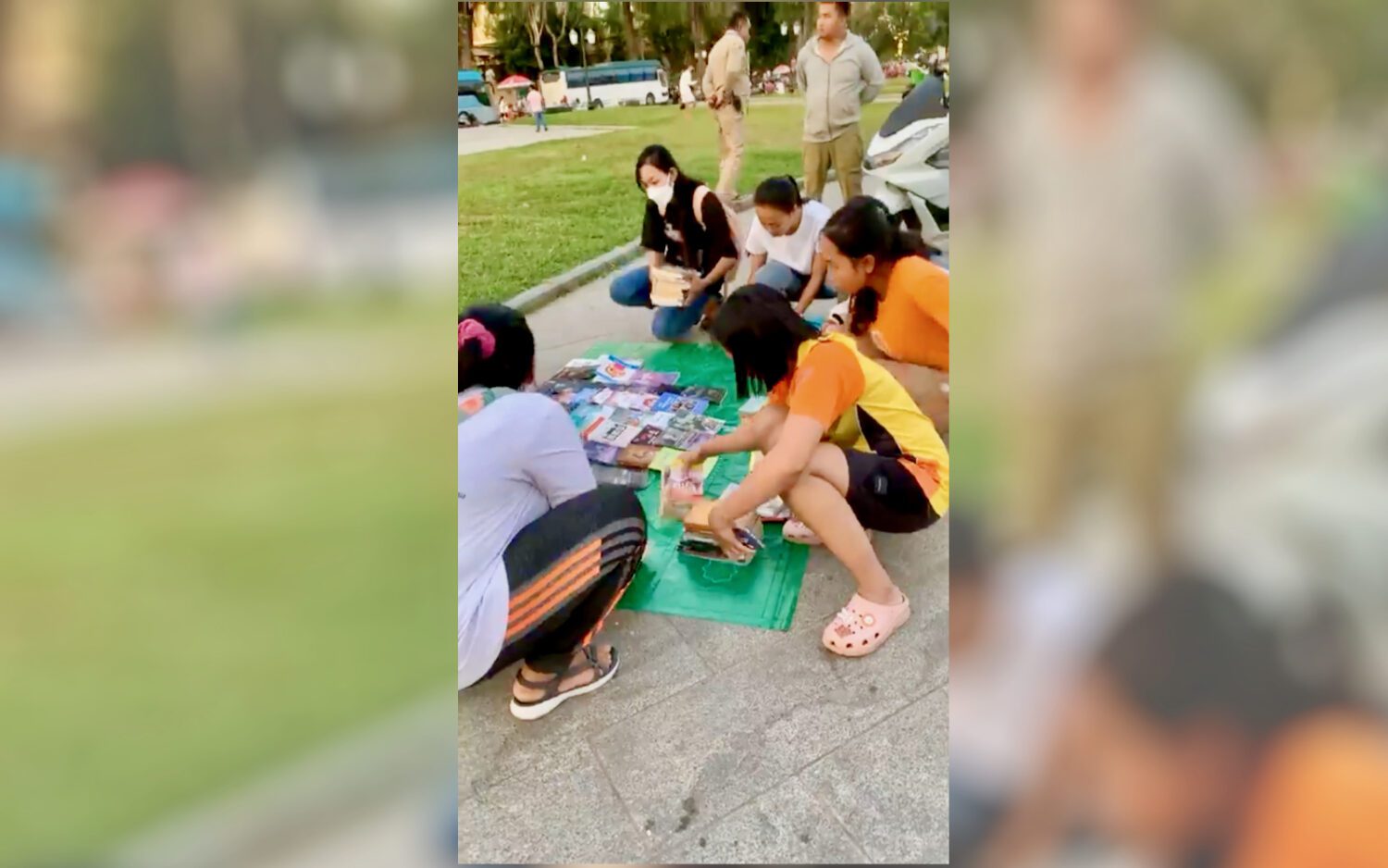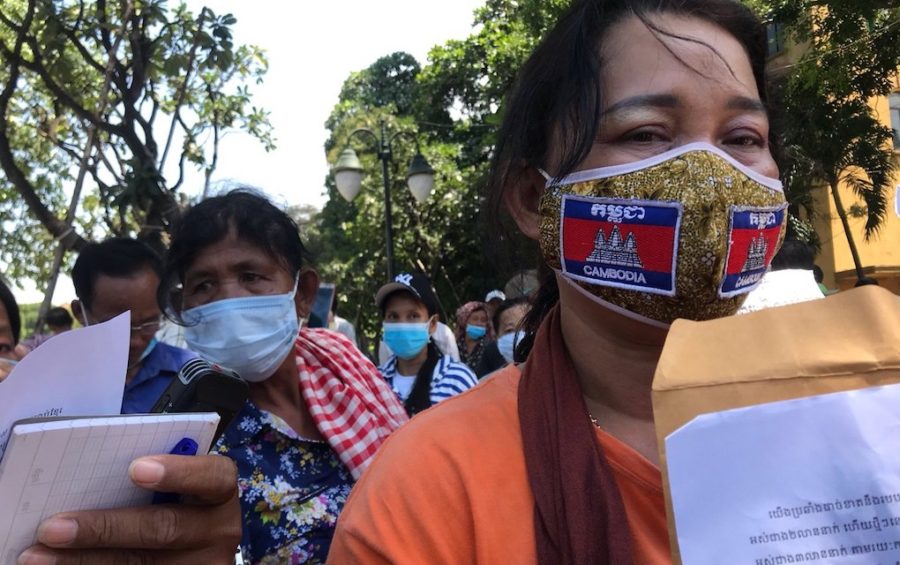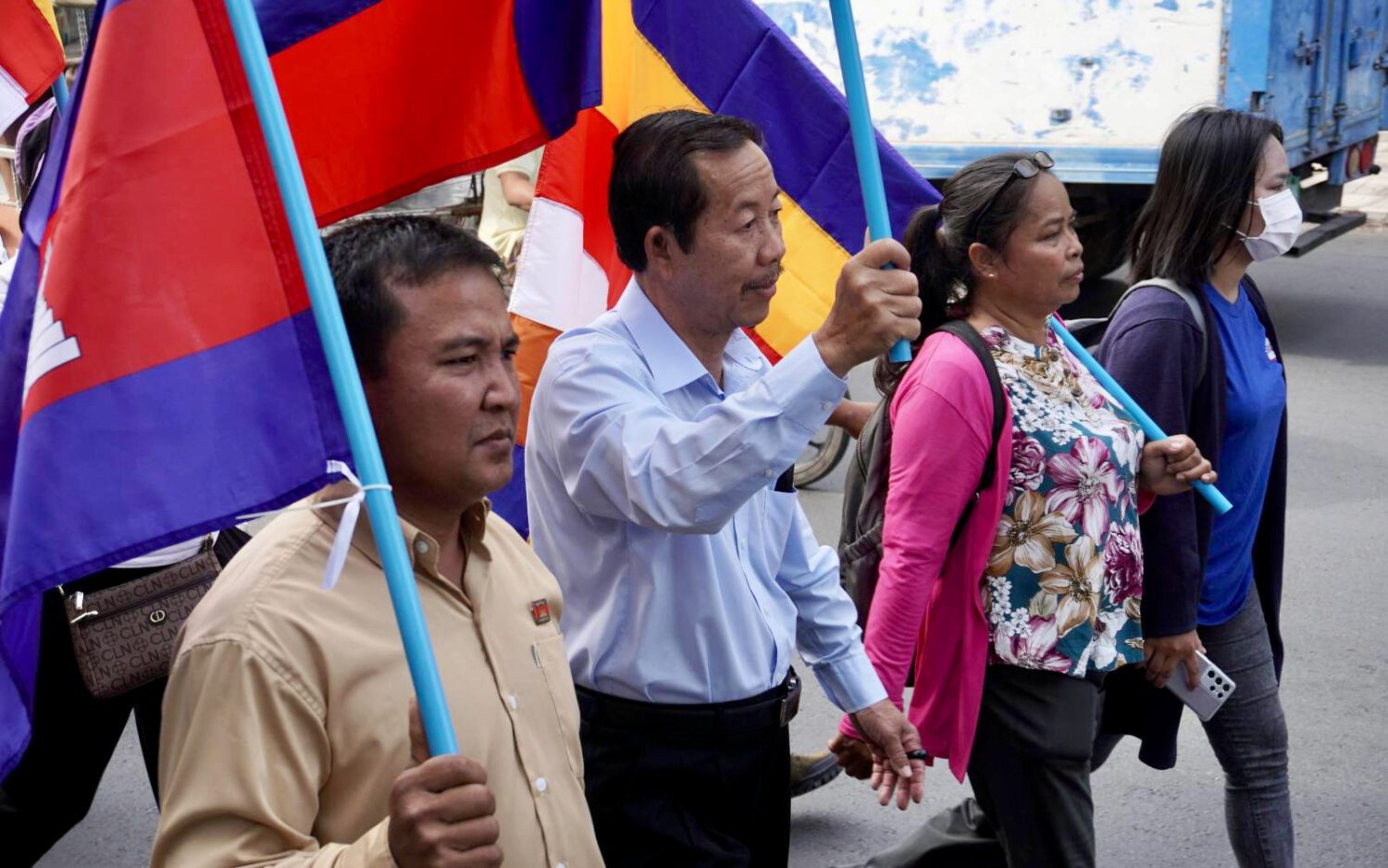PREY KABAS DISTRICT, Takeo province — In September 2017, the Cambodian government shut down a number of independent radio news programs across the country, including VOD, Radio Free Asia (RFA) and the Voice of America (VOA), by claiming that they were being broadcast without the proper F.M. licenses.
After the clampdown on these broadcasts, only VOA remained on the airwaves (via a longer-wave but less accessible A.M. broadcast from outside of Cambodia). RFA and VOD, on the other hand, were left with little choice but to turn to social media services such as Facebook Live to broadcast their daily programs.
For many rural Cambodians, this created a problem. While most households have F.M. radio receivers — and most cheap mobile phone handsets sold across the country also have the ability to receive F.M. radio — the recent proliferation of smartphone usage has still yet to completely cross the age divide.
What’s more, the need to purchase phone credit to listen to independent news broadcasts via the internet added an extra cost to access information that had not existed before. Yet, for many, the small outlays are still worth the cost.
“If we listen only to one side, we will not be able to make any comparisons,” said Kong Thul, a 47-year-old resident of Takeo province’s Prey Kabas district, which lies about 65 kilometers south of Phnom Penh just off National Road 2.
Thul said after the September 2017 media crackdown — which also saw the arrest of two RFA journalists and the shuttering of The Cambodia Daily, as well as the imprisonment of opposition leader Kem Sokha — he and friends who once relied on radio for news about such events turned quickly to online radio broadcasts.
“We listen to both sides, meaning that we combine together the local news, outside news and the voices of civil society, so that we can judge,” he said. “As in the Pol Pot regime, if we only listen to one side, it’s only that one side that can benefit.”
Speaking under his wooden house along a dirt road in the rural area, 72-year-old retired farmer Thou Sreang said he too had strived to learn how to use a phone to access independent news after the September 2017 crackdown left him without access to his usual nightly news broadcasts. He said it was not always easy but that he turned to his young family members for help whenever he had issues.

“I click and listen,” Sreang said. “If I cannot find something, my grandchildren help by clicking for me. Usually at around 7 or 8 p.m., I listen. They talk about the situation and what is going on. It’s a bit more difficult to click — as with the radio, we could search through its channels and the [radio frequency] number.”
Sreang said that he would prefer to access the news by radio given its ease of use — and the fact he did not have to “top up” any credit to listen to the radio — but still wanted to be able to have access to a wide variety of news sources.
However, Vong Cheang, 65, said that he had not had much difficulty in making the transition to using a smartphone after his grandchildren taught him. He gathered with two or three other local residents to listen to the news each day, he said, and they liked the fact they could now choose when to listen to the programs.
“News on the phone is happening all the time but, for me, I prefer to listen at around 6 or 7 a.m. I listen both in the morning and the evenings because my grandchildren save [the programs] for me from the evening,” Cheang said.
“We can listen at any time and don’t need to wait until the broadcast time.”
Another resident, Sim Thearith, 38, said the remaining pro-government media outlets left operating on the radio and television since September 2017 did not seem to offer an accurate account of what was happening in the country. If he only followed this news, he explained, he would not know what was going on.
“If we have accurate news, we will be aware about the news of our society [such as] how our country has to open or open the economy — like with price increases and decreases, and what countries are coming to buy or not,” Thearith said, explaining that independent news on social media had helped fill the void.
Still, nearly two years after the media clampdown — and with last year’s election now long passed — some believe the radio waves should be opened back up. The 2019 World Press Freedom Index ranked Cambodia in 143 among 180 countries, falling down from No. 142 in 2018 and from No. 132 in 2017 before the repression.
Chhorn Chansy, a former Cambodia Daily editor and an independent journalism consultant, said that free access to independent media helped people with their decision-making in everyday life and media closures negatively impacted that.
“I think it’s time the government reconsider giving a bigger space for independent media, in order to enable them to fulfill their duties in broadcasting to people. Because the independent media is a mirror reflecting on [society’s] issues, and that can help with the development of the whole country,” Chansy said.


